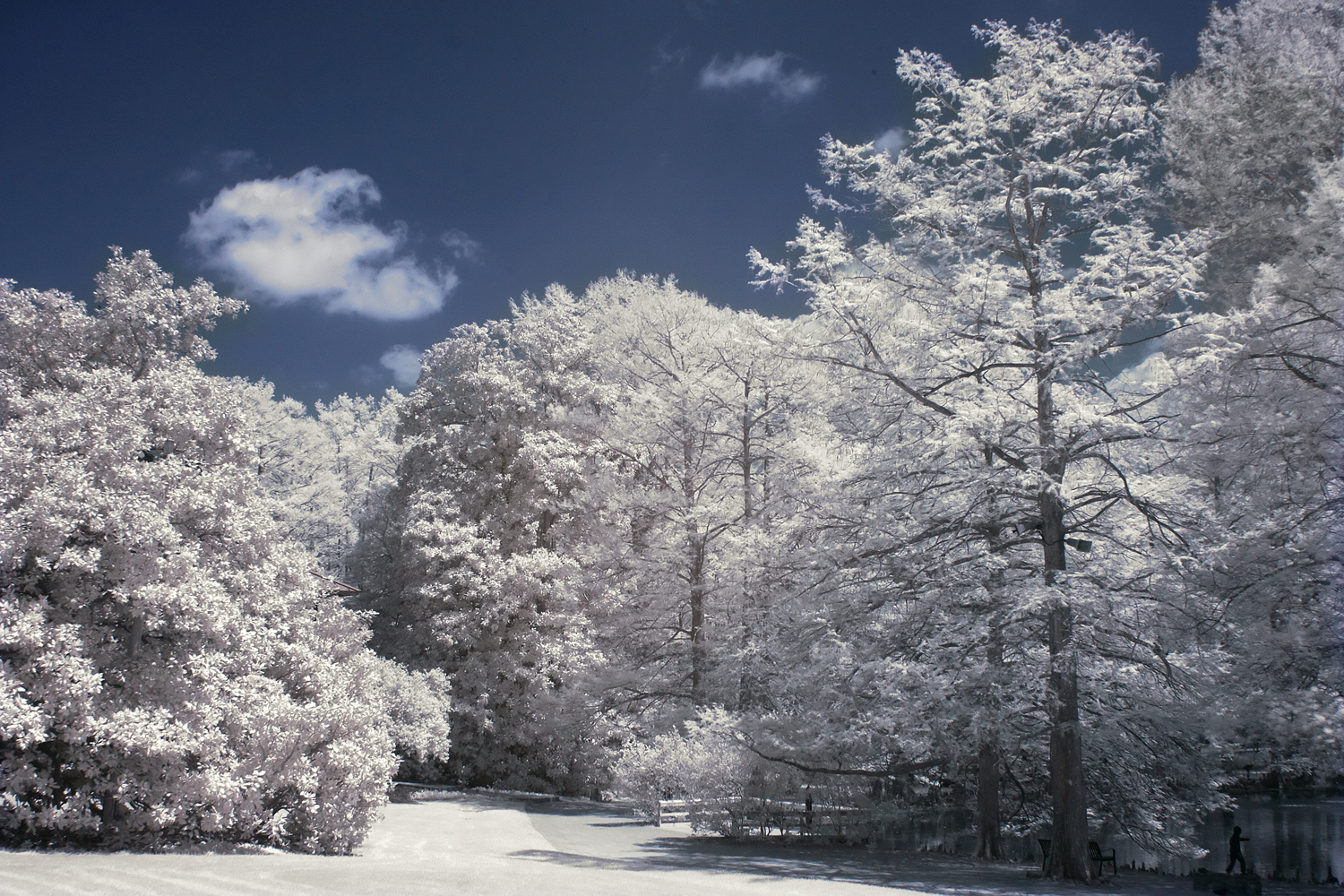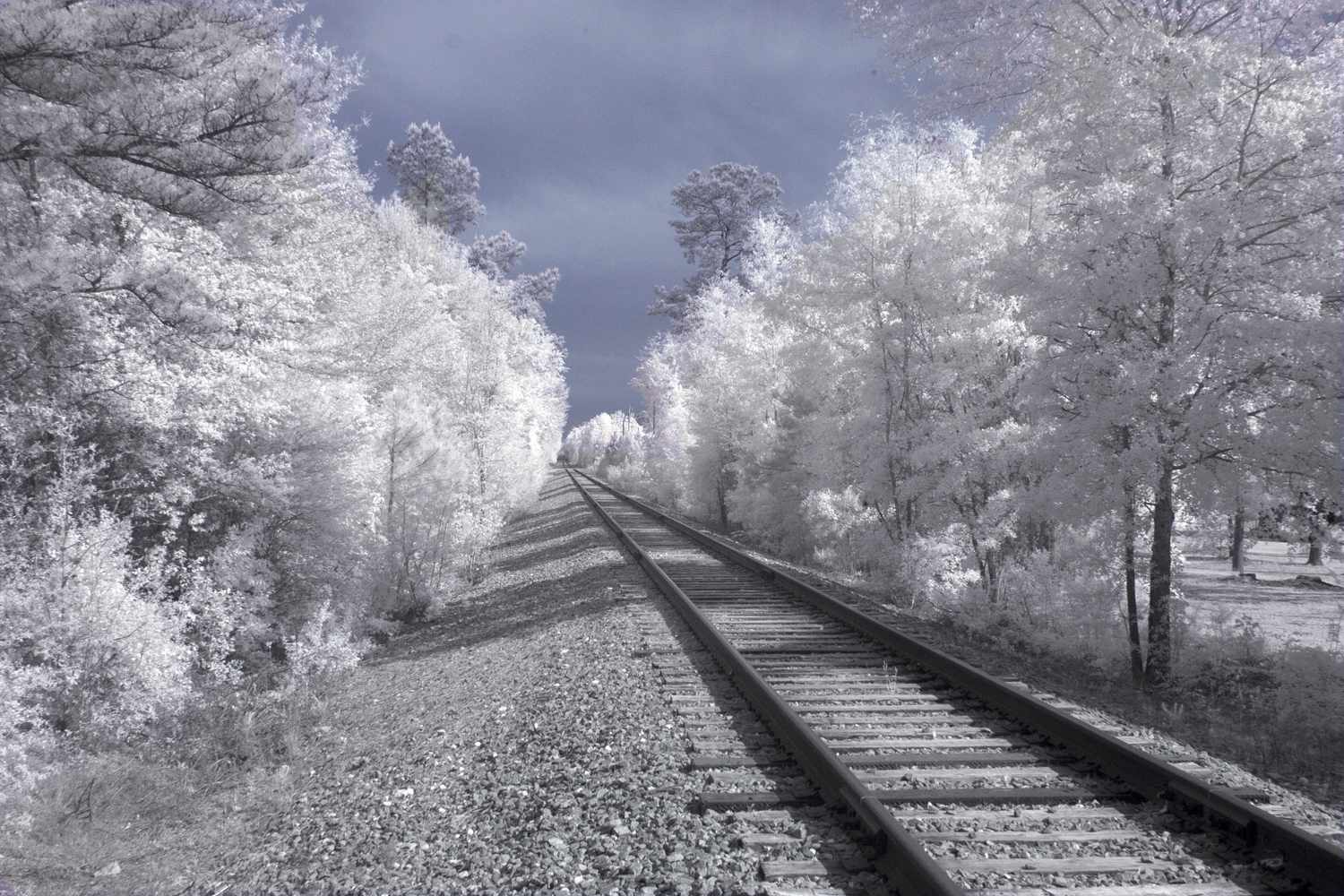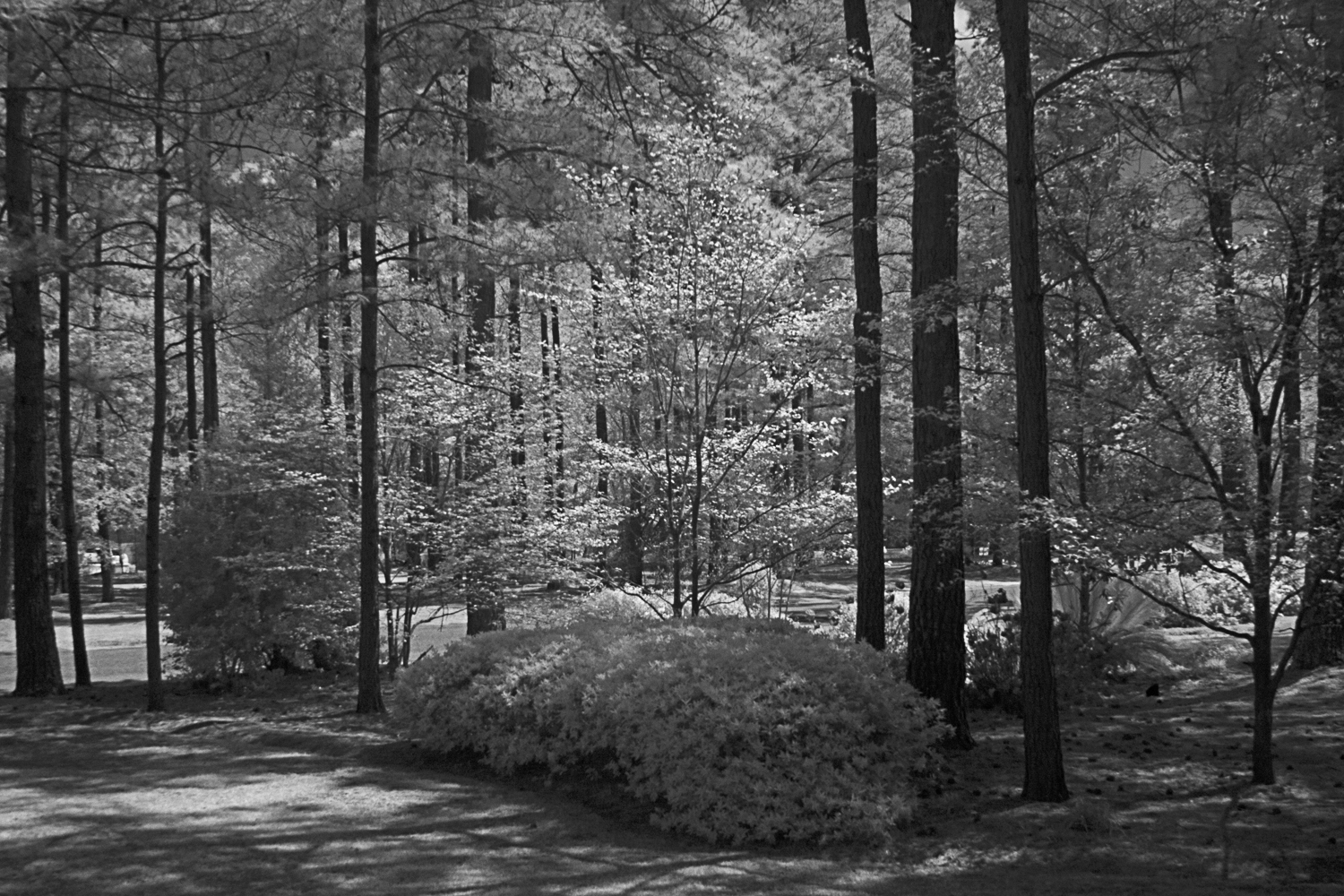 |
|
|
|
|
 |
|
 |
|
| In the following example, the same camera and filter were used, but only the data from the red channel used to create a monochrome image. | |
 |
|
| Back | |
Shooting IR with a Full-Spectrum Modified DSLR
|
With a Full-Spectrum modified DSLR, the world of IR photography is
opened up to you. These infrared wavelengths are normally
invisible to your eyes, but when made visible with a modified camera and
an IR filter, they convey the world in a much different fashion.
IR photography is traditionally captured through a filter that allows
ONLY IR light, or possibly IR light and some portion of the visible
spectrum to pass through to the camera's sensor. A true IR filter
will appear virtually black to the naked eye and nothing can be seen
through it. With a DSLR that has been modified to be sensitive to
the widest segment of the spectrum possible, we will shoot IR by placing
either a lens mounted IR filter or a clip-in IR filter in the light path
to block all wavelengths shorter than the specified cutoff wavelength of
the filter. For instance a filter labeled as 720 nm will block all
wavelengths shorter than 720 nanometers and pass wavelengths longer than
720 nanometers. Since the human eye is blind to IR light, the
optical viewfinder will be useless in composing your subject.
However, the camera's sensor is very sensitive to IR with a
full-spectrum modification and you can use the Live-View feature in the
later model Canon DSLR's to see your subject on the LCD screen in real
time. If you don't have Live-View, you can simply shoot a test
image and adjust composition from the review image on the LCD screen.
Autofocus works fine and results in crisp focus as in normal
photography. Since we are using lenses that are corrected for
normal wavelengths but not for IR, and we are capturing a fairly wide
range of IR wavelengths, it is helpful to use a fairly high f-stop to
get a good focus depth of field. Even though the IR filter is
almost opaque to visible light and you might think long exposures would
be required, the full-spectrum modified camera is quite sensitive to IR
and short handheld exposures are fine. The DSLR sensor has a Bayer
matrix of red, green or blue filters covering each pixel and you may
expect that infrared light would only be captured by red pixels.
However, even though the red pixels are very sensitive, there is a
significant response to IR light in the green and blue pixels as well
since their Bayer filters are somewhat transparent to IR light.
Some IR photographers will use only the data from the red channel in
their final monochrome images. However, don't overlook the data in
the green and blue channels. Often the most detail will appear in
the green channel. Also, if you want to experiment with
pseudo-color images, such as those below, you will need to be careful
not to overexpose any of the three channels. Thus, it is helpful
to set your camera's display screen to show an RGB histogram so that you
can adjust the exposure to prevent clipping any channel's data. Here are some examples of IR photography with a Full-Spectrum modified camera from Eric Chesak - http://www.ericchesak.com/Infrared The images below were captured with a Full-Spectrum modified Canon 40D along with a Massa 720 nm IR lens mounted filter. All were set for manual mode, f/13 and 1/340th of a second exposure. I used the red/blue channel swap technique described on many IR photography processing web sites to create a blue sky.
|
 |
|
|
|
|
 |
|
 |
|
| In the following example, the same camera and filter were used, but only the data from the red channel used to create a monochrome image. | |
 |
|
| Back | |